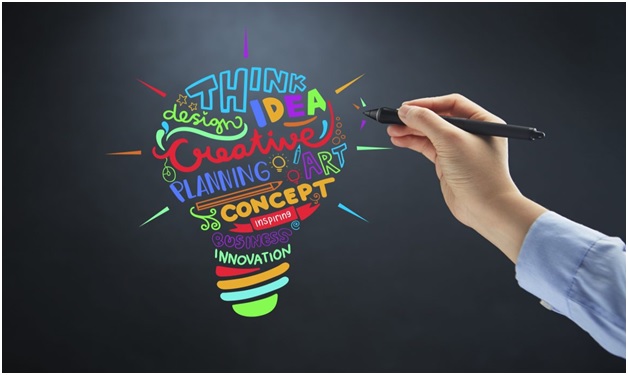There are many different types of logo designers, but they all have to do one thing in common: they must be able to create designs that their clients love. To become a successful logo designer, you must have excellent graphic design, color theory, and typography skills. You’ll also need an eye for detail and a good sense of business to become a successful logo designer. Here are 15 steps that will help you achieve your dream of becoming a successful logo designer:


How to Become a Successful Logo Designer?
1- Create A Portfolio
The first step to becoming a successful logo designer is to create a portfolio. Your portfolio will be your calling card, so make sure it includes your best work and is easy to navigate. It’s a good idea to have a PDF version of your portfolio that potential clients can download on their own time.
2- Design for Yourself
To become a successful logo design and build a solid portfolio, you need to start designing logos for yourself, create a brand and design your website or web app pages. You are not required to be a master of Photoshop or Illustrator at this stage; you only need some free time and a little imagination. This will help you understand how logo design works and give you the confidence to create your logo designs when someone asks for one.
Furthermore, when you design for yourself, you can focus on your target audience and create designs that attract them. This is a great way to start logo design because it allows you to develop a style and voice without worrying about working within any parameters.
3- Learn The Basics of Design
Learning the basics of design is important before designing logos or any other type of graphic art. This will help you understand how elements like color, line weight, and orientation affect a design, allowing you to create better logos in the future. It’s also important not just because it will improve your skills but because it gives you a deeper understanding of how logos work and how they’re constructed so that when an idea comes into your head, you’ll be able to create something that looks good without having to refer back to books all the time. This is what a successful logo designer usually does.
4- Learn The Basics of Typography
Typography plays an important role in creating an effective logo, so a successful logo designer needs to understand the basics of typography. Typography is the technique and art of arranging type to make written language readable, legible, and attractive when displayed. The arrangement of type includes selecting typefaces, line lengths, point sizes, leading (line-spacing), tracking (letter-spacing), and kerning (adjusting the space between pairs of letters). Typography is also applied to the appearance, style, and arrangement of the numbers, letters, and symbols created by the process.
5- Select The Best Font
When selecting a font for a logo, a successful logo designer must pick something that matches your brand identity as closely as possible. You want something that reinforces what you already have going on with your eBook writing services company name or slogan, not something that clashes with it!
Also, ensure your text looks great in different sizes (bigger/smaller) by testing it on different devices if you send it for printing purposes. This can be done by uploading your design on websites like WhatTheFont (for free!), where users will try to identify it based on its characteristics such as shape, strokes, size, etc.
6- Learn The Basics of Color Theory
Another important thing you must do to become a successful logo designer is learn about colors. We all know that colors can have an amazing effect on people’s moods and behaviors, but did you know that different colors also have different meanings? If you want to sketch a logo that will evoke emotions in your customers, then you need to learn about color theory.
Colors are powerful tools that can be used when creating logos, and a successful logo designer understands that fact. They help you to create a brand identity; they can attract attention, express certain emotions, etc. So if you want to make your clients happy with their new logo designs, then learn about colors first!
7- Keep Your Logo Design Simple
One of the most common mistakes that newbie logo designers make is trying too hard to make their designs look complex and sophisticated without realizing that there is nothing wrong with simplicity – especially when it comes to logos! Simplicity is what makes good logos stand out from mediocre ones! So if you want your logo design to look professional and you want to become a successful logo designer, then don’t try too hard. Keep it simple!
8- Understand The Art of Negative Space
Negative space is the area around your logo that’s not occupied by graphic elements. This makes sense when you think about it: The space surrounding it is negative if you have an image in a rectangular shape. The key to good logo design is understanding how to take advantage by using negative space. For example, if you have a text-based logo with a lot of text, you might want to consider reducing the amount of text so that there’s more room for negative space around it.
9- Select A Distinct Color Palette to Represent Your Brand
Colors are powerful; they evoke emotions and influence people’s perceptions of a product or company. To apply this concept, select 2-3 colors that best represent your company and use them consistently throughout all designs and marketing materials. This will help customers easily identify your brand and differentiate it from competitors.
10- Get Feedback from Clients and Colleagues
The best way to improve is to get honest feedback from others. If you’re a designer, this means people hire you for your work and buy your logo designs. So it’s important to get feedback on your work quality from the people who hire you or your colleagues at the workplace. It’s also important to get feedback early on in your career so that your mistakes don’t become your habits. If you wait until after you’ve started working on a project, it’s too late. There’s no going back!
11- Know Your Audience and Competitors
Before you start designing a logo for a new business, you must know whom you’re designing for. You need to understand their business, brand, and target audience. You also need to know who makes them different from their competitors and how they want them to be perceived by the world. This will help you create a more effective design that will resonate with that particular market.
12- Take Time for Ideas and Concepts
Once you understand your target audience, now start thinking about the types of logos they want to see. You can use this to explore different concepts and ideas that might not have occurred to you otherwise. Brainstorming helps generate ideas you may not have thought of before, ultimately leading to better designs in the long run. You’ll also find yourself coming up with some pretty interesting concepts along the way!
13- Make Sure That It Represents
The best way to ensure that your logo represents the business or brand well is by asking some basic questions about it: What does it look like? Does it have any colors? Is there any specific element in it that stands out from others? These questions will help you determine whether or not the design concept you have created is suitable for representing the company and its brand values. If it isn’t, then you will have to rethink and redesign, or whatever modification is required, you have to do.
14- Don’t Overlook the Minor Flaws
When you’re designing a logo, there will be times when you get so caught up in the process that you’re not paying attention to the finer details. This can lead to mistakes that might not be obvious at first glance but will ultimately make your design look amateurish. While you may have heard that “good enough” is good enough, this isn’t true when creating logos. You need to pay attention to every detail to create a high-quality logo that will stand out from the crowd.
15- Consider How the Logo Translates Across Different Platforms
Logos need to work on both small and large scales, from print materials like business cards and websites to billboards or signs outside of places of business. Suppose you’re designing a logo for an apparel company, e, ample, then you need to ensure that other elements like lettering or images aren’t too small for people’s eyesight when printed on shirts and pants. If the logo needs to be reworked for different media, it is best to take your time and create something that can be converted into other media platforms, such as print and social media.
Conclusion:
Logo design is a competitive field, but it’s also one of the most gratifying professions when you get the chance to create something that resonates with your client. When starting as a successful logo designer, you must have the right tools and skills. Hopefully, this article can serve as a general guideline for those just starting and trying to figure out how to become successful logo designers. Of course, not all these steps will apply to everyone, but having an idea of what the industry is looking for, and working towards that goal, can only serve you well.
















